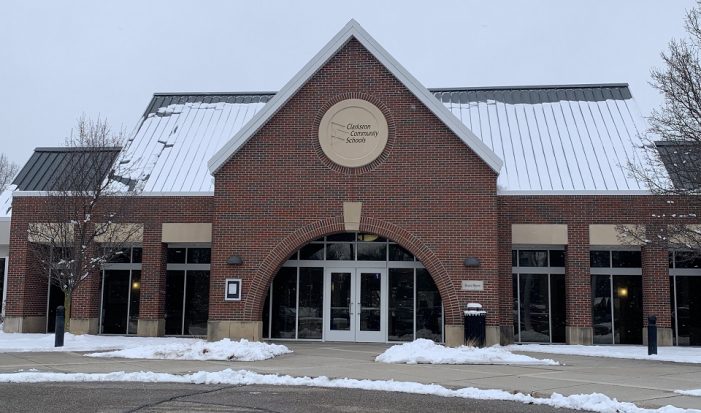By Matt Mackinder
Clarkston News Editor
INDEPENDENCE TWP. — According to Michigan.gov, over 20% of Michigan high school students – one out of every five – say they are being bullied.
Bullying can affect everyone and is linked to negative outcomes for students who are bullied, choose to bully, as well as witness bullying.
At Clarkston Community Schools, “combating bullying is much more than just enforcing policies,” according to a statement from the district.
“In Clarkston Community Schools, we are approaching the issue of bullying and negative interactions from several angles. Our administrators have trained together on the elements of bullying and threats, how to assess the conduct, and how to respond to resolve the problem effectively.
“In addition to disciplinary measures, our staff utilizes restorative practices. These holistic practices allow us to connect with our students and their families, which leads to a better understanding of the child and their current situation. In many cases, we also connect the students involved in a safe space, giving them the opportunity to learn the impact their words and actions have on others.”
As an added measure, every building in Clarkston Community Schools has a dedicated social worker.
“We have added more counselors and behavioral support to our secondary schools to allow stronger connections with students and more individuals to address concerns or issues,” continued the statement. “Our student-to-counselor ratio is one of the lowest in Oakland County. We involve our students in our efforts to prevent bullying with a strong emphasis on speaking up, not being a bystander, and saying something when they see something.”
Superintendent Dr. Shawn Ryan reiterated the district’s stance on bullying.
“Unfortunately, bullying is a nationwide issue,” Ryan said. “In Clarkston Community Schools, we are taking steps every day to combat bullying, including increased counselors and social workers, professional development for staff and administrators, implementing restorative practices, and involving students in our efforts. There isn’t one answer to put a stop to it. All of these efforts are necessary and, in some cases, may need to be implemented several times. However, there is one crucial aspect to emphasize: We must communicate! Students, parents, staff, administrators, everyone.
“If your child is being bullied or having a negative experience with other students, please don’t wait to address the issue. Involve us right away so we can intervene. Our skilled team will work relentlessly until your child feels comfortable attending school, ready to learn, healthy, and safe.”
The district-wide bullying policy can be found at http://tinyurl.com/yxzz2km5 as well as within the code of conduct at http://tinyurl.com/2p8axfcx.
On a county-wide school basis, steps are also being taken to mitigate and educate those involved.
“What separates bullying from all other acts of aggression is an imbalance of power, and power is defined by the culture of the community,” said Julie McDaniel-Muldoon, consultant, safety and well-being, at Oakland Schools. “Further, working on the equity and inclusivity of school environments is an effective first step in bullying prevention.”
According to the Pew Research Center, bullying can take many forms, including cyberbullying, which nearly half of U.S. teens report experiencing. Cyberbullying occurs on social media, online gaming, email, online platforms, and text message and messaging apps. Though bullying may start during school hours, this kind of bullying makes it possible for students to be victimized 24 hours a day.
According to the Centers for Disease Control and Prevention, studies have shown that bullying can cause depression, personality disorders, anxiety, substance abuse, and increased risks of suicide attempts.
Students and parents are encouraged to contact the State of Michigan’s Okay2Say tip line at 8-555-OK2SAY or OKAY2SAY@mi.gov to report a situation that could place them or others in danger. OK2SAY is available statewide for public and nonpublic schools.
“Internationally, bullying researchers, experts, and practitioners agree that the most effective bullying prevention begins with a safe and supportive school environment that prioritizes social and emotional development,” said McDaniel-Muldoon. “Research and evidence-based bullying prevention programs are only as effective as the health of school culture at the time of implementation.”
FILE PHOTO: Matt Mackinder

